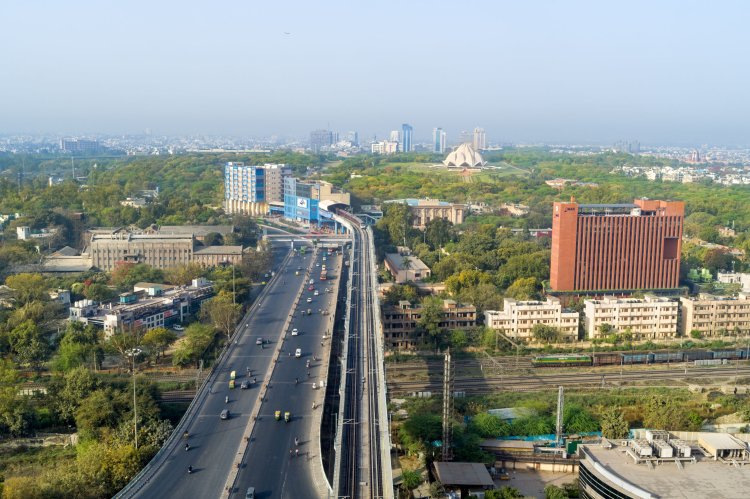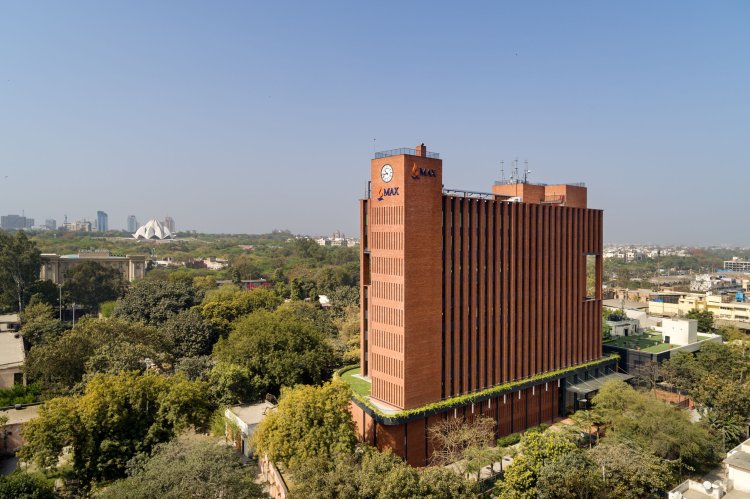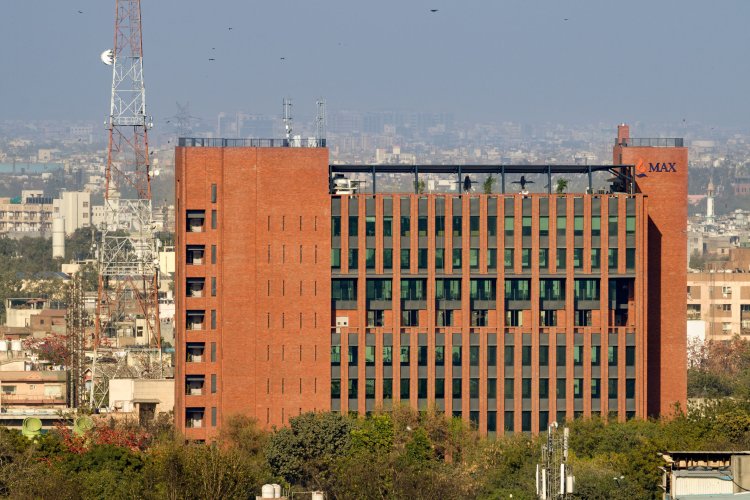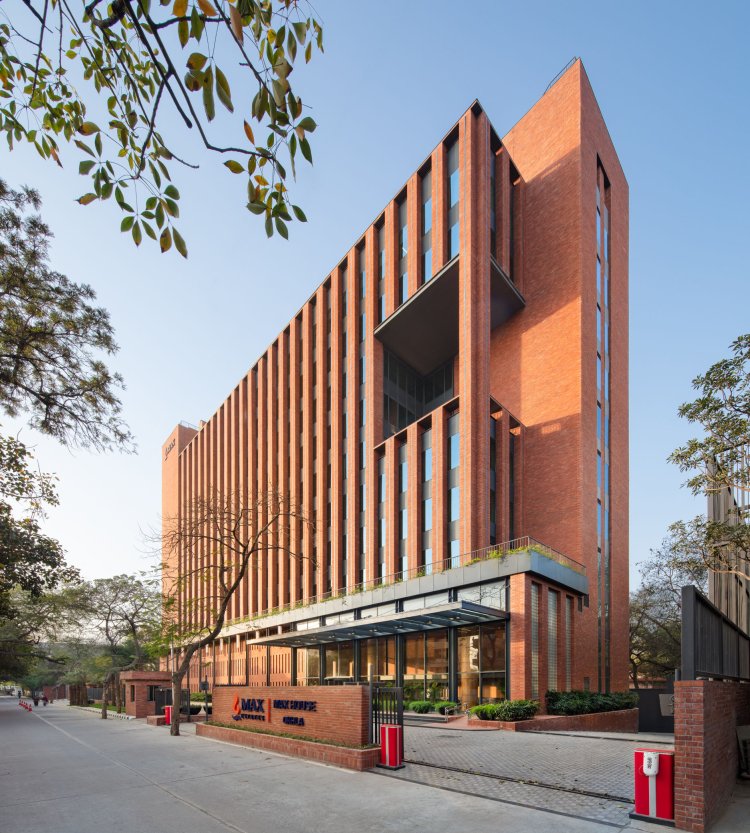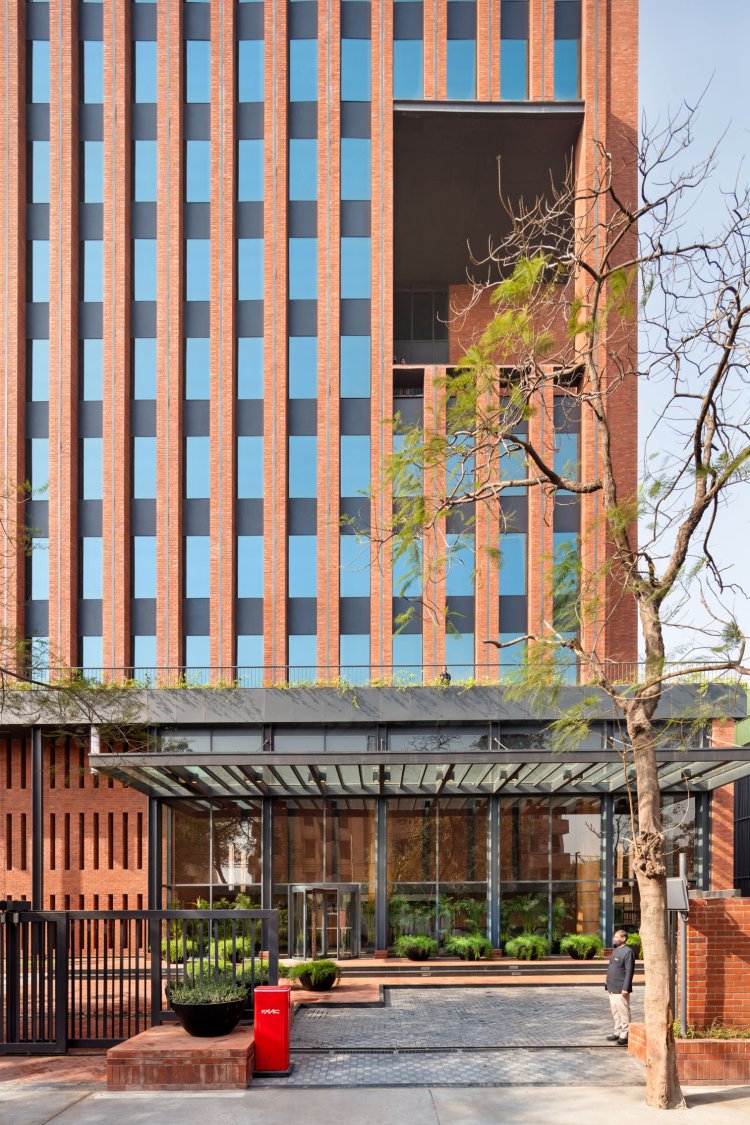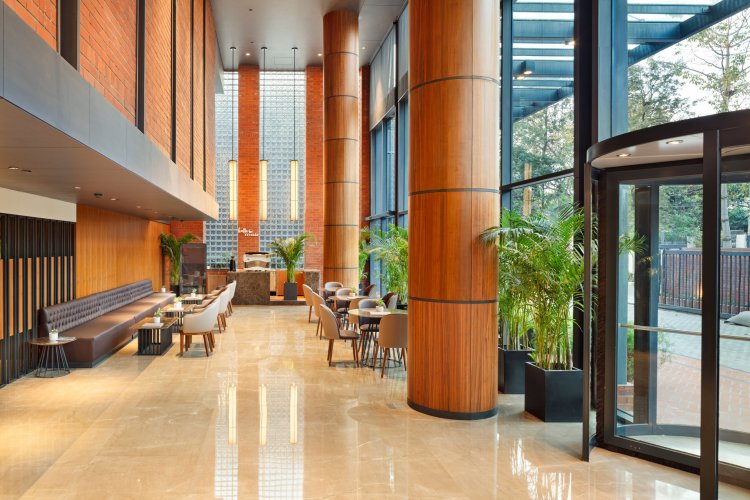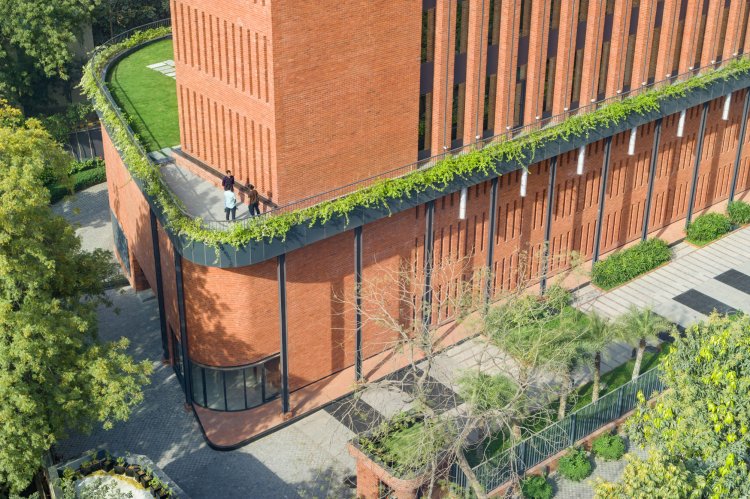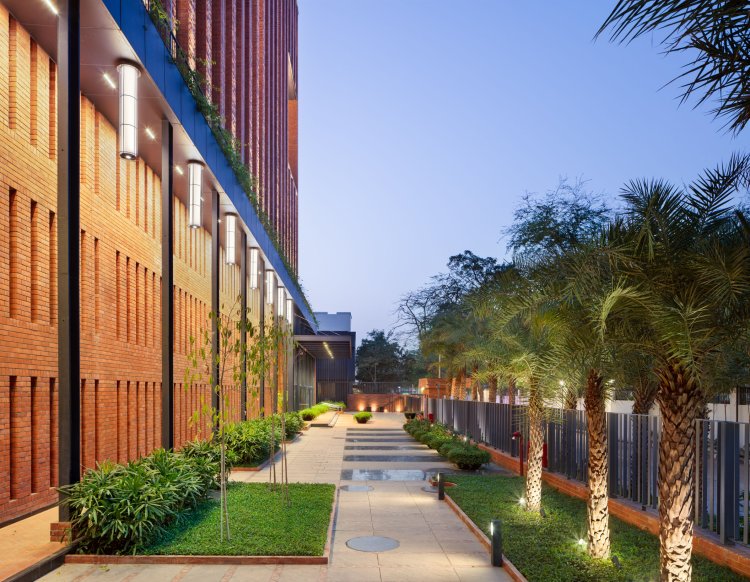Max House
Max House is a corporate campus developed by Max Estates, the premium real estate arm of the Max Group of Companies. Located in New Delhi’s Okhla industrial area, the development comprises two multi-tenant buildings placed within a verdant campus—two new towers designed to accommodate a myriad of workspaces and an existing building to be adapted into a community hub that integrates the ground plane of the towers. Max Estates’ project brief succinctly underscored the need for a multi-storey office building that would ease into the landscape and nod to its context while aiming to set a benchmark for timeless architecture. The client expressed a desire for the building to echo the brand’s underlying design philosophy rooted in sustainability, resilience, and environmental harmony. The building was to be designed in a way that its architecture and interior expression would reflect responsible sourcing and use of materials and unite it with state-of-the-art workspaces and high-performance systems. The site adjoins a bustling thoroughfare, sitting across from an east-west metro corridor, and is a stone’s throw from old industrial buildings such as the Modi Flour Mills and the Baha'i House of Worship, an iconic landmark and tourist attraction. This presented an opportunity for the studio to determine the development's overall design vocabulary. Since the development is in proximity to the Yamuna floodplain, the high water table meant that soil conditions in the area would prove to be unfavourable for deep excavations. Additionally, traffic impact analyses necessitated the need for a two to three-basement deep vehicular parking, thus posing an unusual challenge for the design team. To account for vehicular parking for the eight-storey Block A that was to come up on the site, a parking podium was devised that simultaneously opens up volume for the creation of a spacious triple-height reception lobby at the ground level. The resultant intervention also optimizes vistas — while the reception lobby offers occupants views of lush vegetation flanking the building, the terrace level from the first floor and onwards afford virtually unimpeded views of the Baha'i House of Worship, and the skyline beyond. Moreover, the podium has so been configured, along the building’s northwest, that its height is roughly the same as that of the adjacent railway colony, thereby maximizing views along this part of the building as well. The buildings are planned to create a wide promenade on the ground level, to facilitate vehicular access up to the building line. The site periphery, in turn, has been reserved for pedestrian access. This access has been transformed through two primary interventions — the setting back of the site boundary to cede space to the city and the neighbouring traffic, and the softening of the site boundaries through landscaping to enable greater physical and visual connection between the complex and its immediate context. Through the formation of this expansive, almost porous forecourt, Max House integrates itself with its surroundings, a marked departure from typical gated commercial developments. Distinguishing itself from its neighbours while remaining firmly embedded in its industrial context, the design vocabulary of Max House extends the narrative set by the old Modi Flour Mills in the vicinity and adapts it for a contemporary workspace. The tower’s façade references the Flour Mills building through its distinctive bands of alternating brick and glass, punctuated by spandrel panels, deep-set balconies and community terraces. While the ground floor is primarily allocated for the podium parking spaces, the first floor features extended terraces, doubling as an elevated park for the users. The tower features a floor-to-ceiling height of 3.75 metres. The floor plates and the modulating façade have been designed to ensure optimal daylight penetration without concurrent glare, almost eliminating the dependence on artificial means of lighting in the day. The lift and service cores are positioned along the two ends of the buildings, creating an open, rectangular floor plate that allows for maximum flexibility in terms of use. The floor plate configuration, in conjunction with the facade’s significantly low wall-to-window ratio of 60:40 and shading spandrels to cut down solar glare, significantly elevate the passive design parameters of the building, a unique proposition in new-age office building design. The rooftop is designed to accommodate an event space and al fresco dining while providing visitors panoramic vistas of the surrounding landscape. The design scheme extends the expression of exposed brickwork into the interiors, injecting spaces with a natural, ‘handcrafted’ appeal. While brickwork and glass blocks create the retro chic approach to the interiors of the triple-height lobby, neutral tones of stone and veneer imbue the surfaces with understated elegance. A collaboration

